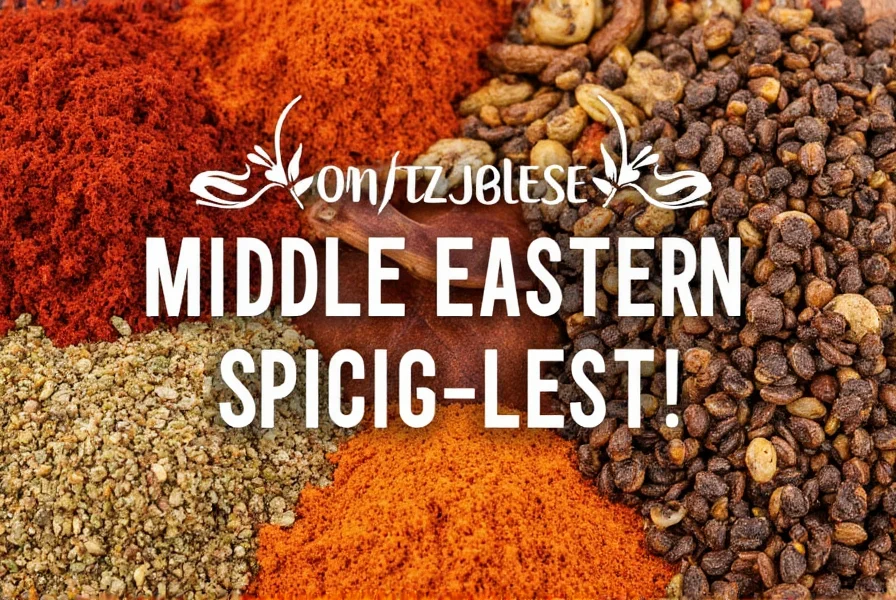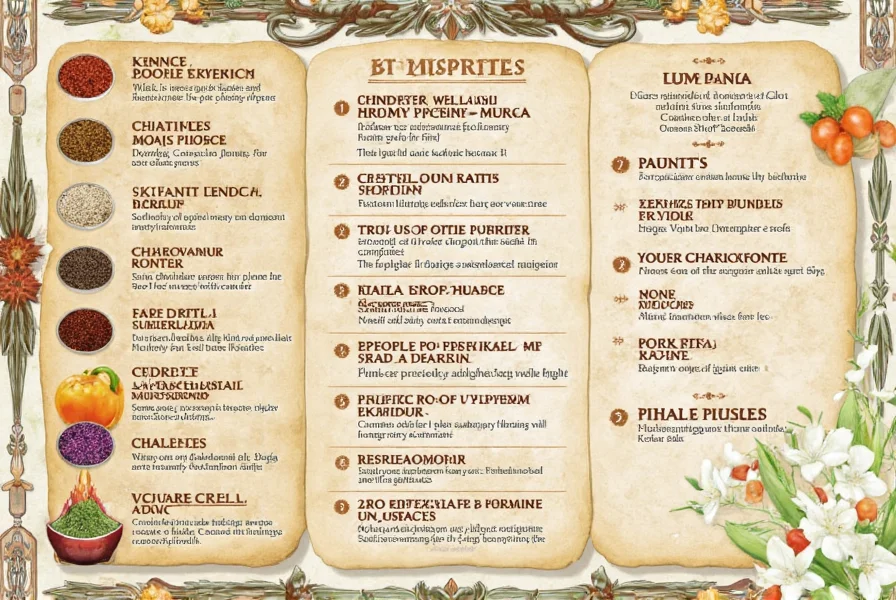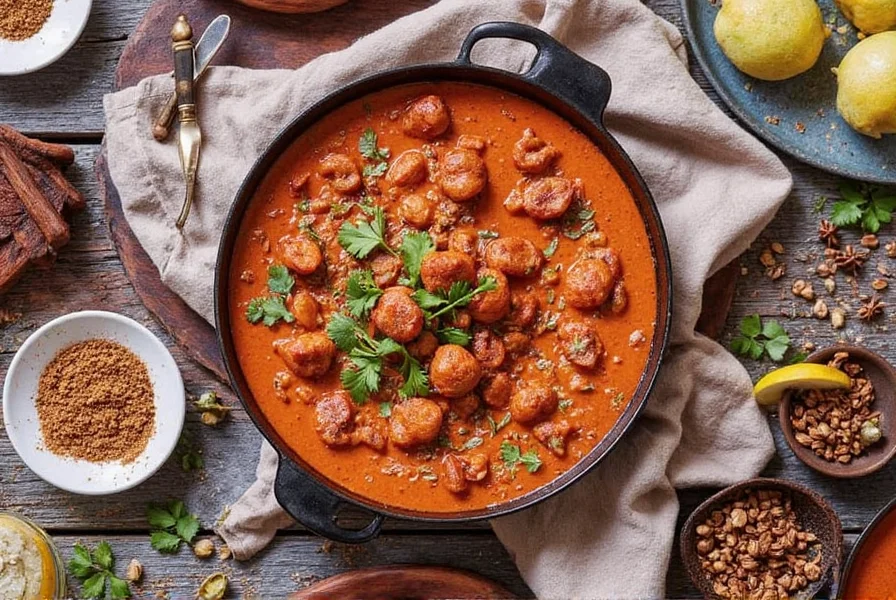Spice Safari: A Flavorful Journey Through Global Cuisines
Table of Contents
- Introduction
- India: The Land of Endless Spices
- Middle East: Where Earth Meets Fire
- Mexico: Zesty, Vibrant, and Full of Life
- Asia Beyond Borders: Thai, Chinese & Indonesian Flavors
- Europe: Subtle But Never Boring
- Buying Guide: How to Choose the Right Spices for Different Cuisines
- Conclusion
Introduction
Spice is the soul of cuisine — the invisible hand that transforms simple ingredients into unforgettable meals. Around the world, every culture has its own unique relationship with spices, shaping flavors, traditions, and even history. In this article, we’ll explore how different cuisines harness the power of spices to create bold, aromatic, or subtly nuanced dishes.
We’ll dive deep into flavor profiles from India to Italy, Mexico to Morocco, and everything in between. Along the way, you’ll find practical tips to recreate these tastes at home, plus a handy buying guide to help you stock your pantry like a seasoned pro.
India: The Land of Endless Spices
When it comes to spice, few places rival India. With over 30 major regional cuisines, Indian food is a masterclass in blending, roasting, grinding, and frying spices to perfection.
The Spice Trinity: Turmeric, Cumin & Coriander
- Turmeric: Known for its earthy warmth and golden hue, turmeric is a staple in most Indian kitchens. It’s anti-inflammatory and adds depth to dishes like dal, korma, and rice pilafs.
- Cumin: Toasted to release its nutty aroma, cumin is the backbone of many spice blends including garam masala and panch phoron.
- Coriander: Sweet and citrusy, ground coriander helps balance heat and bitterness, making it essential in both dry and wet curries.
Regional Spice Highlights
| Region | Signature Spice Blend | Common Use |
|---|---|---|
| South India | Sambar Powder | In lentil-based sambar stew |
| North India | Garam Masala | Added at the end of cooking for warmth and fragrance |
| Bengal | Panch Phoron | Tempered in oil before adding vegetables or fish |
Pro Tip
To unlock the full flavor potential of Indian spices, always toast whole seeds before grinding or adding them to oil. This brings out their natural oils and intensifies aroma.
Middle East: Where Earth Meets Fire
The Middle East is where ancient trade routes converged, bringing saffron from Persia, sumac from Syria, and allspice from Lebanon. The result? Rich, layered dishes that are as aromatic as they are hearty.

Must-Have Middle Eastern Spices
- Za’atar: A tangy blend of thyme, sumac, sesame seeds, and salt. Sprinkle on flatbreads or mix with olive oil for dipping.
- Sumac: Tart and lemony, it brightens grilled meats, salads, and yogurt sauces.
- Allspice: Warm and peppery, it’s commonly used in meatballs (like kofta) and stews.
- Cardamom: Found in both sweet and savory dishes, especially desserts and Arabic coffee.
Signature Dish: Shawarma
Shawarma spice blend typically includes paprika, garlic powder, coriander, cumin, cinnamon, and black pepper. Marinated meat slow-roasts for hours, absorbing the deep, smoky flavors.
Pro Tip
Use za’atar to add brightness to roasted vegetables or sprinkle over hummus. Its complex flavor profile replaces salt and vinegar in one fell swoop.
Mexico: Zesty, Vibrant, and Full of Life
Mexican cuisine uses spices not just for heat, but for color, depth, and balance. Think smoky chipotle, zippy chili powders, and toasted seeds that bring crunch and flavor.
Top Mexican Spices You Should Try
- Ancho Chili Powder: Mild and fruity, perfect for moles and enchilada sauces.
- Guajillo Chili: Slightly spicy with a tea-like note, often used in salsas.
- Smoked Paprika: Brings that rich, barbecue feel without overpowering other flavors.
- Epazote: A herb with a punch, often used in beans and soups for digestive benefits.
Iconic Dishes
- Mole Poblano: Combines chocolate, chilies, nuts, and spices like cinnamon and clove for a rich, complex sauce.
- Tacos al Pastor: Inspired by Lebanese shawarma, it features marinated pork with dried chilies, pineapple, and adobo seasoning.
Pro Tip
Toast dried chilies gently in a dry pan before rehydrating them. This enhances their flavor and removes any bitterness.
Asia Beyond Borders: Thai, Chinese & Indonesian Flavors
Asia is a vast continent with countless culinary traditions, each with its own approach to spice. Whether it’s the floral notes of lemongrass in Thai green curry or the tongue-numbing sensation of Sichuan pepper, Asia delivers bold, dynamic flavor experiences.
Thai Cuisine: Hot, Sour, Sweet, Salty
- Lemongrass: Adds a bright, citrusy aroma to soups and curries.
- Kaffir Lime Leaves: Fragrant and sharp, often used in tom yum soup and green curry.
- Galangal: Similar to ginger but spicier and more piney; essential in authentic Thai curries.
Chinese Cuisine: Heat Without Overpowering
- Sichuan Pepper: Not technically a pepper, but causes a tingling numbness known as “ma la.” Perfect in mapo tofu and hot pots.
- Star Anise: Licorice-like flavor, often used in braised dishes like red-braised pork.
Indonesian Cuisine: Complex and Layered
- Kunyit (Turmeric): Used in many Indonesian spice pastes like bumbu kuning.
- Asam Jawa (Tamarind): Not a spice, but vital in balancing savory and sour elements in dishes like rendang.
Pro Tip
For homemade Thai curry paste, grind together galangal, lemongrass, kaffir lime leaves, and red chilies. Freeze in portions for quick future use.
Europe: Subtle But Never Boring
European cuisine may not be the first place you think of when you hear “spice,” but don’t be fooled — Europe’s spices add nuance, complexity, and tradition to dishes across the continent.
Famous European Spices
- Paprika (Hungary): Sweet or smoked, it gives goulash its distinctive color and mild heat.
- Dill (Scandinavia):strong>: Fresh or dried, dill is essential in pickled herring and potato dishes.
- Saffron (Spain): The world's most expensive spice, used in paella and seafood stews.
- Nutmeg (Netherlands): Often grated fresh into creamy sauces or Dutch stews.
Classic Dishes
- Coq au Vin (France): Uses bouquet garni — a bundle of thyme, bay leaf, and parsley — to infuse the dish with herbal warmth.
- Goulash (Hungary): Built around sweet paprika and caraway seeds, creating a comforting, slightly smoky stew.
Pro Tip
Rub meats with freshly grated nutmeg before roasting. It pairs beautifully with pork and root vegetables, offering a subtle sweetness that complements savory flavors.
Buying Guide: How to Choose the Right Spices for Different Cuisines
Choosing the right spices can make or break a dish. Here’s how to select and store spices like a pro, whether you’re making biryani or bouillabaisse.

What to Look For
- Whole vs Ground: Whole spices retain their potency longer. Grind only what you need for maximum flavor.
- Color: Vivid hues usually indicate freshness. Faded colors mean faded flavor.
- Aroma: Smell the spice before buying. If it doesn’t smell potent, it won’t taste good either.
Essential Spice Kits by Region
| Region | Key Spices | Recommended Brand |
|---|---|---|
| India | Turmeric, Cumin, Coriander, Garam Masala | MDH, Everest, Badshah |
| Middle East | Za’atar, Sumac, Allspice, Cardamom | Al Wadi Al Akhdar, Simply Organic |
| Mexico | Ancho, Guajillo, Epazote, Smoked Paprika | La Flor, El Guapo |
| Thailand | Lemongrass, Kaffir Lime Leaf, Galangal | Maesri, McCormick |
| Europe | Paprika, Saffron, Nutmeg, Dill | Simply Organic, Penzey’s |
How to Store Spices
- Keep Cool & Dry: Store spices away from heat and light to preserve potency.
- Use Airtight Containers: Oxygen and moisture degrade spices over time.
- Label Everything: Date your spices so you know when to replace them (most last about 2–3 years).
Pro Tip
Buy in small quantities if you cook infrequently. Spices lose flavor quickly once opened, especially ground ones.
Conclusion
From the smoky depths of Indian garam masala to the vibrant zest of Mexican chilies, the world’s spice cabinets offer endless possibilities. Understanding how different cuisines use these powerful ingredients opens up a world of flavor right in your own kitchen.

So next time you reach for that bottle of cumin or cardamom, remember — you’re holding centuries of culinary wisdom in your hands. Now go season something amazing!










 浙公网安备
33010002000092号
浙公网安备
33010002000092号 浙B2-20120091-4
浙B2-20120091-4